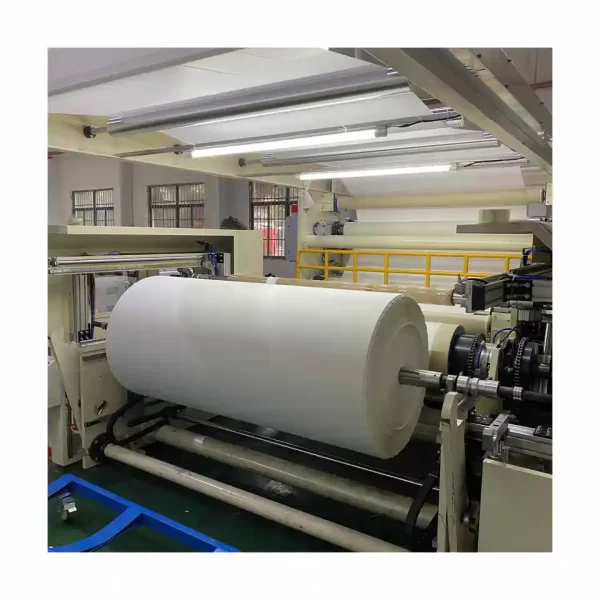Manufacturing Process of Spunbond Nonwoven Fabric
The world of nonwoven fabrics is incredibly diverse, with one of its most fascinating elements being the production of spunbond nonwoven fabrics. This comprehensive exploration into the manufacturing process of spunbond nonwoven fabric will uncover the complex steps and techniques involved in the creation of this essential material.
Spunbond Nonwoven Fabric: A Brief Introduction
Before diving into the manufacturing process, it’s important to understand what spunbond nonwoven fabric is. Spunbond fabrics are a type of nonwoven fabric, which means they are made directly from fibers without the intermediate step of weaving or knitting. They are formed by the spunbond process, which involves the extrusion, drawing, and laying down of continuous filaments of molten polymer, resulting in a fabric with high tensile strength, excellent uniformity, and good breathability.
The Manufacturing Process of Spunbond Nonwoven Fabric: A Step-by-Step Breakdown
Now let’s delve into the intricacies of the spunbond nonwoven fabric manufacturing process, a harmonious symphony of science, technology, and engineering.
Raw Material Selection
The first step in the process involves the selection of the polymer. Spunbond fabrics can be made from a variety of polymers, including polypropylene, polyester, polyethylene, and nylon. The choice of polymer will depend on the intended end-use of the fabric. For instance, polypropylene is often chosen for its balance of cost, performance, and processing ease.
Polymer Melting and Extrusion
The selected polymer is fed into an extruder, where it is melted at high temperatures. This molten polymer is then pushed through a spinneret—a device with numerous tiny holes—forming long, continuous filaments. This process is akin to squeezing out threads from a showerhead.
Quenching and Drawing
The molten filaments are quickly cooled or ‘quenched’ by a stream of cool air, solidifying them into threads. Following quenching, the filaments undergo a drawing process. In this step, the filaments are elongated under controlled tension and air speed, which increases their strength and determines their diameter.
Web Formation
The drawn filaments are then laid onto a moving conveyor belt in a random manner to form a web. The randomness of this process results in a highly uniform fabric with isotropic (equal in all directions) properties. The web formation is performed in such a manner that the fabric gets its strength and flexibility, which is crucial for its final application.
Bonding
The laid web of filaments is then bonded to impart strength and integrity to the fabric. This is typically done through thermal bonding, where the web is passed through heated rollers or a heated calendar. The heat causes the polymer to melt slightly at the filament junctions, bonding the web into a fabric when it cools.
Advantages of Spunbond Nonwoven Fabric Manufacturing Process
The spunbond process offers several advantages. It is a high-speed, continuous process that can produce nonwoven fabrics of excellent uniformity and high strength. The process is highly automated, reducing labor costs and enhancing production efficiency. Furthermore, the fabrics can be tailored to a wide range of properties and uses by adjusting process parameters and using different polymers.
Conclusion
The manufacturing process of spunbond nonwoven fabric is a complex blend of science, technology, and engineering. Each step of the process is finely tuned to produce a fabric with properties tailored to its intended application. From the raw material selection to the final bonding, every detail matters in crafting a high-quality spunbond nonwoven fabric. Understanding this process underscores the value and the remarkable
Please visit our website for more product details https://medposnonwoven.com/product/spunbond-non-woven-fabric/

